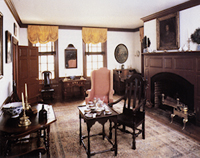
Pitt-Dixon House Parlor. Williamsburg, Virginia. Circa 1719.

Pitt-Dixon House Parlor. Williamsburg, Virginia. Circa 1719.

Interior furnished in William and Mary style at West St. Mary's Manor, built in the early 1700s in southern Maryland. Note the southern type of tea table.
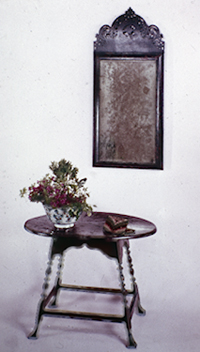
Tea table of maple, looking glass of pine. This type of tea table is characteristic of the northern colonies and is sometimes called a "tavern table" since the type was often used in drinkiing establishments in the North.
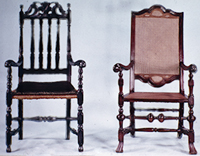
Arm chairs from New York and Pennsylvania. Left, banister back, right, cane back.
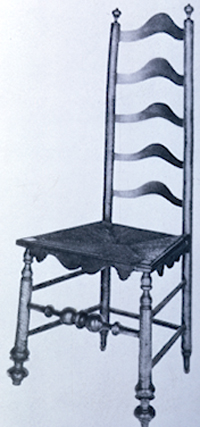
Graduated slat back chair, New Jersey. Circa 1710. Maple. This type chair developed in the Delaware river valley in the early Eighteenth Century and seems to have evolved from the earlier heavy slat-back chair.
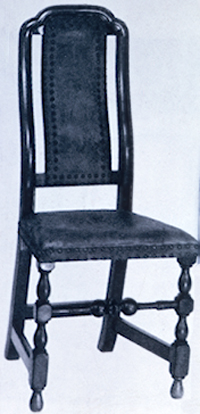
Bended-back maple side chair upholstered in leather, 1700-70. This type of chair with a back of Chinese derivation, was known in the 18th century as a Boston chair because it was exported in quantity from that port.
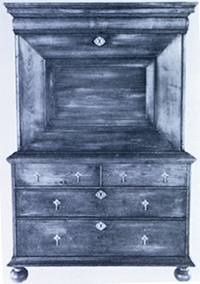
Fall front secretary desk of walnut. This cabinet is stamped on the base of one of the small drawers, Edward Evans, 1707, and is the earliest signed and dated Philadelphia piece.
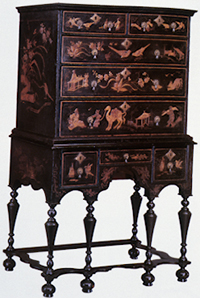
A Massachusetts, circa 1700, japanned high chest made of maple and white pine. The chinoiserie on the drawer fronts resembles designs from Stalker and Parker's Treatise of Japanning and Varnishing which was published in London in 1688.
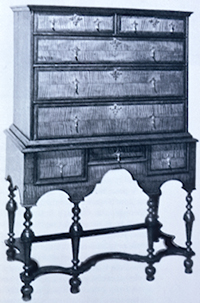
High chest of drawers of veneered walnut and maple from Pennsylvania, circa 1700-30.
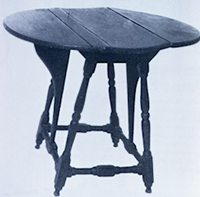
"Butterfly" table of maple from New England, circa 1700-30.
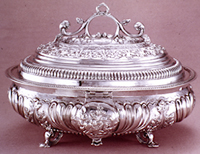
Silver sugar box by Edward Winslow of Boston, 1702.
The copyright law of the United States (Title 17, United States Code) governs the making of photocopies or other reproductions of copyrighted material. The University of Oregon adheres to this statute by relying on the fair use provisions of the copyright law and by obtaining permission of the copyright holder where applicable. One of the conditions of the copyright law as it applies to libraries specifies that a photocopy or reproduction is not to be used for "any purpose other than private study, scholarship, or research. A user may be liable for copyright infringement if a user makes a request for, or later uses, a photocopy or reproduction for purposes in excess of "fair use," or for purposes prohibited by the stated terms and conditions set by a publisher or vendor.